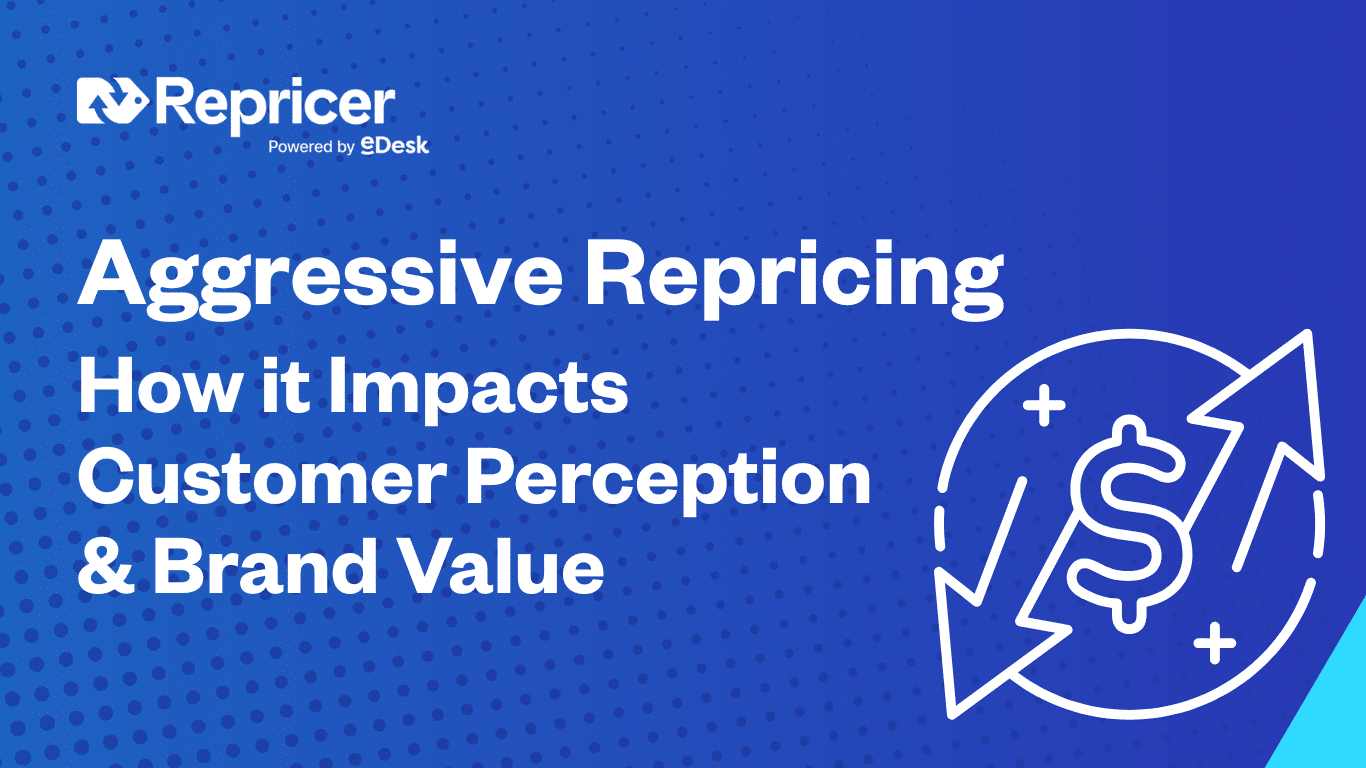Picture this: you’re scrolling through Amazon and notice your favorite brand’s product price has dropped again—for the third time this month. What’s your first thought? If you’re like most consumers, you might wonder what’s wrong with the product or whether the brand is struggling. This scenario illustrates one of the most overlooked consequences of aggressive repricing: the repricing impact on customer perception can have devastating effects on long-term brand value.
While automated repricing tools have revolutionized eCommerce competitiveness, the rush to undercut competitors often comes at a hidden cost that goes far beyond reduced profit margins. Understanding these consequences is crucial for brand-conscious sellers and marketing managers who want to maintain their market position without sacrificing brand integrity.
The Psychology Behind Price Perception
Before diving into the negative effects of repricing, it’s essential to understand how customers interpret pricing changes. Recent research shows that price perception is one of the key factors influencing consumer purchasing decisions, with choices often determined not by actual cost but by perceived price and value in the consumer’s mind.
When customers see frequent price drops, they don’t just see savings—they make subconscious judgments about product quality, brand stability, and future value. This psychological phenomenon, known as price anchoring effects, means that once customers associate your brand with lower prices, it becomes incredibly difficult to justify higher price points later.
Consider how dynamic pricing brand image works in practice. A study from 2024 revealed that retailers adopting dynamic pricing strategies can boost profits by 5% to 10% while driving sustainable revenue growth and enhancing customers’ perception of value. However, this only works when pricing changes are strategic rather than reactive.
How Brand Loyalty Erosion Happens Through Aggressive Repricing
One of the most significant negative effects of repricing is brand loyalty erosion. When businesses engage in constant price cutting, they inadvertently train customers to wait for the next discount rather than valuing the product at its original price point.
This creates a dangerous cycle where customer expectations shift permanently. Research indicates that customers drawn by low prices are rarely loyal, and the moment a competitor offers a lower price, they’ll jump ship. This price-sensitive customer base offers little protection during market downturns and provides minimal long-term value to your business.
The perceived quality drop phenomenon is equally concerning. When customers see prices falling regularly, they naturally question whether the product quality has declined or if the original pricing was inflated. This perception can persist long after pricing strategies change, making it difficult to rebuild premium positioning.
The Race to the Bottom Consequences
Perhaps the most dangerous aspect of aggressive repricing is how it can trigger competitor reaction price wars. When one seller dramatically cuts prices, competitors often feel compelled to respond, creating a downward spiral that benefits no one except bargain-hunting customers.
Recent analysis shows that companies involved in price wars often see their profit margins plummet, naturally followed by cost-cutting measures including layoffs, reduced investment in development, and the release of lower-quality products. This race to the bottom’s consequences extend beyond individual businesses to entire market segments.
The data is sobering: constant price cuts can significantly erode a brand’s credibility and the value of its offerings, making it challenging to increase prices without losing customers in the future. For many businesses, recovery from this positioning can take years, if it’s possible at all.
Strategic Repricing: The Profit-Focused Alternative
The solution isn’t to abandon repricing altogether but to approach it strategically. Smart sellers focus on long-term profitability vs. short-term sales by implementing targeted repricing strategies that protect brand value while maintaining competitiveness.
This means using repricing strategies that prioritize profit margins and brand positioning over simply being the cheapest option. Advanced repricing tools now offer features like minimum profit thresholds and competitor-specific rules that prevent the destructive patterns discussed above.
Successful businesses understand that customer trust pricing strategy requires transparency and consistency. Rather than constantly adjusting prices, they focus on providing clear value propositions that justify their pricing structure. This approach helps avoid price war scenarios that damage entire market categories.
Protecting Your Brand Through Smart Repricing
For brands selling private label products, the stakes are even higher. Repricing private label brand protection requires careful consideration of how pricing changes affect brand perception and customer relationships.
Consider implementing these protective measures:
Set Intelligent Price Floors: Establish minimum prices that protect your profit margins and brand positioning, even during competitive pressures.
Focus on Value Communication: Instead of competing solely on price, emphasize unique product features, superior customer service, or exclusive benefits that justify your pricing.
Monitor Competitive Intelligence: Use insights to understand market movements without reactively matching every competitor’s price changes.
Selective Competition: Choose which competitors to monitor and respond to based on their market position and customer overlap, rather than racing against every seller.
Building Long-Term Customer Relationships
The most successful brands understand that sustainable growth comes from building customer relationships that transcend price considerations. This means creating value that customers can’t find elsewhere—whether through superior product quality, exceptional customer service, or unique product features.
According to recent research, pricing dissatisfaction has surged to become the leading source of customer complaints, outstripping concerns such as stock availability, customer service, and checkout processes. However, businesses that focus on overall value rather than just price point show significantly better customer retention rates.
When customers trust your brand and understand your value proposition, they become less sensitive to minor price differences. This customer trust pricing strategy provides protection against competitive pressures and creates a foundation for sustainable profitability.
The Technology Solution: Smart Repricing Tools
Modern repricing technology offers sophisticated solutions that balance competitiveness with brand protection. These tools can monitor thousands of competitors while maintaining pricing rules that protect your business interests.
The key is configuring these systems to support your brand strategy rather than simply matching the lowest market price. Features like profit-based repricing, competitor weighting, and category-specific rules allow you to compete intelligently while maintaining brand value.
Smart repricing also means understanding when not to compete. Sometimes, maintaining your price point and communicating your value proposition is more profitable than entering a pricing battle that damages your brand perception.
Conclusion: Repricing as Brand Strategy, Not Just Price Competition
The repricing impact on customer perception extends far beyond immediate sales metrics. While aggressive repricing might provide short-term competitive advantages, the long-term consequences often outweigh these benefits. Brand loyalty erosion, perceived quality drops, and market-wide price wars can permanently damage your business positioning.
The solution lies in strategic repricing that prioritizes brand value alongside competitiveness. By setting intelligent price floors, focusing on value communication, and using technology that supports your brand strategy, you can maintain market position without sacrificing long-term profitability.
Remember, customers who choose you based solely on price will leave you for the same reason. Building a sustainable business means creating value that transcends price considerations—and that starts with how you approach repricing in your competitive strategy.
The most successful sellers understand that repricing should enhance, not undermine, their brand value. With the right strategy and tools, you can stay competitive while building the kind of customer loyalty that drives long-term success.





